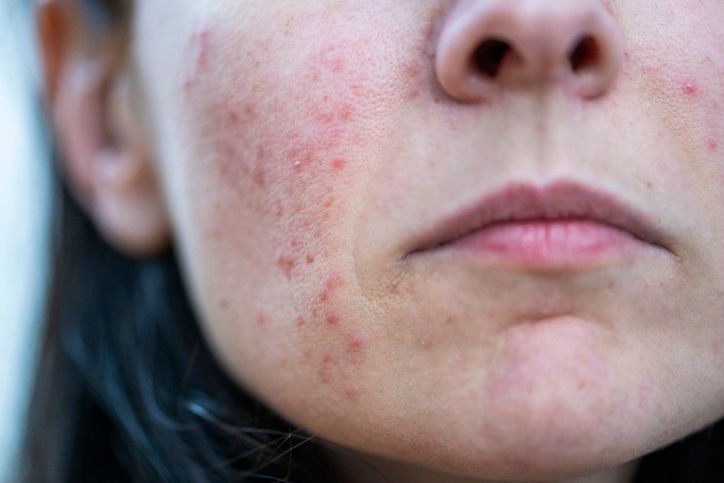Author: Natalie Ng|Updated: 21 May 2025
Oily skin usually starts with the sebaceous glands. These glands produce sebum, an oily substance that helps keep the skin hydrated. But when they become too active, they create excess sebum that builds up on the skin’s surface. That extra oil can clog pores, mix with dead skin cells, and lead to acne breakouts—especially in acne prone skin. Increased oil production is common and influenced by factors like hormones, diet, and even genetics. The mix of wax esters, fatty acids, and other components in sebum can build up inside hair follicles, leading to skin concerns such as enlarged pores or blackheads. Products that block pores or routines that irritate sensitive skin often make things worse. Even over-cleansing can increase sebum production by stripping the skin’s protective barrier. Still, there are practical ways to reduce sebum production without causing more skin irritation. By choosing the right skincare habits, it's possible to manage excess oil and support healthy skin. Keep reading to learn how to reduce sebum production while keeping the skin balanced and less reactive throughout the day.

Choose Non-Comedogenic Products to Reduce Excess Sebum

Product choice affects oil production
Using the wrong products can trigger increased oil production and clogged pores. This is common in acne prone skin, where sebaceous glands are already producing excess sebum. Some ingredients block hair follicles, trap dead skin cells, and lead to skin concerns like blackheads or acne vulgaris.
Non-comedogenic products are less likely to clog pores. These are safer for oily skin and sensitive skin because they avoid ingredients that can increase sebum excretion rates or cause skin irritation. Choosing the right cleanser, moisturizer, or sunscreen helps reduce excess oil without damaging the skin’s surface.
Match ingredients to your skin type
Oil glands behave differently across the face. Some people produce sebum mostly on the forehead and nose. Others have increased oil production across the entire body. Products that are oil free and lightweight help manage sebum secretion more effectively.
Start by checking the label. Choose formulas marked non-comedogenic. If your skin feels tight or shows signs of flaky skin, test the product on a small area before using it daily.
Key ingredients that support skin balance
Niacinamide helps reduce sebum production by calming the oil glands. Jojoba oil mimics natural sebum and helps control sebum without triggering more oil. Aloe vera and hyaluronic acid are also helpful because they keep the skin hydrated without blocking pores. These ingredients work together to support the protective barrier while helping absorb excess oil.

Use a Double-Cleansing Method to Control Sebum Secretion
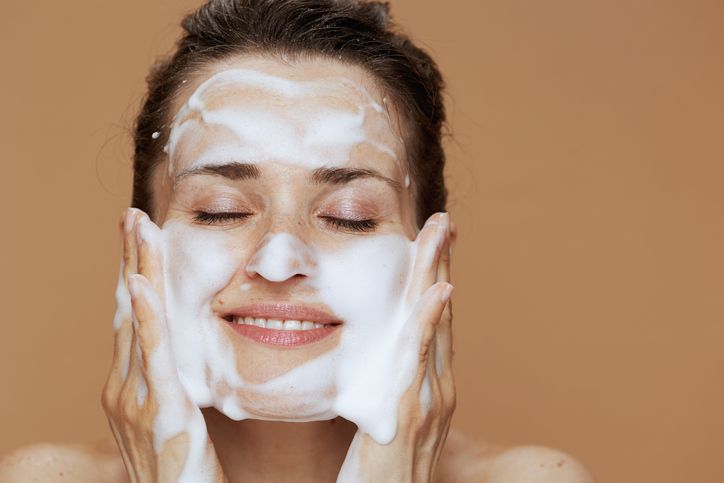
Importance of cleansing in sebum control
Double-cleansing helps reduce excess sebum while keeping the skin balanced. It works by removing both oil-based and water-based buildup. This includes sebum, makeup, sunscreen, dead skin cells, and residue from air pollution. When these sit on the skin’s surface, they can clog pores and lead to acne breakouts—especially in oily skin and blemish prone skin.
This method supports cleaner pores without damaging the skin barrier. It also lowers the chance of skin irritation and prevents the oil glands from increasing sebum production in response to harsh products or over-cleansing.
Step-by-step cleansing breakdown
Double-cleansing works best in the evening, when sebaceous glands have produced more sebum throughout the day. Follow these steps to help clear your skin effectively without stripping it.
First cleanse (oil-based cleanser)
• Dampen the skin with warm water
• Apply a quarter-size amount of oil-based cleanser
• Massage in circular motions using your fingertips for one minute
• Focus on areas where sebaceous glands produce more sebum
• Rinse thoroughly with warm water
This step dissolves makeup, excess oil, and sunscreen. It helps break down wax esters and clears the oily substance that can collect in hair follicles.
Second cleanse (water-based cleanser)
• Apply a dime-size amount of non-comedogenic water-based cleanser
• Use gentle upward motions for about 45 seconds
• Concentrate on oil-prone areas
• Rinse with lukewarm water
• Pat dry with a clean towel
This step clears away leftover sweat and impurities. It supports clean pores and prepares the skin for any following treatments like exfoliants or niacinamide. Always use your fingertips and avoid hot water, which can lead to dry skin and trigger more oil production.
Read More
Book Now to Experience
Acne Treatment
1 Minute Self-Registration
Date should not be before minimal date

Apply Clay Masks Weekly to Absorb Excess Sebum
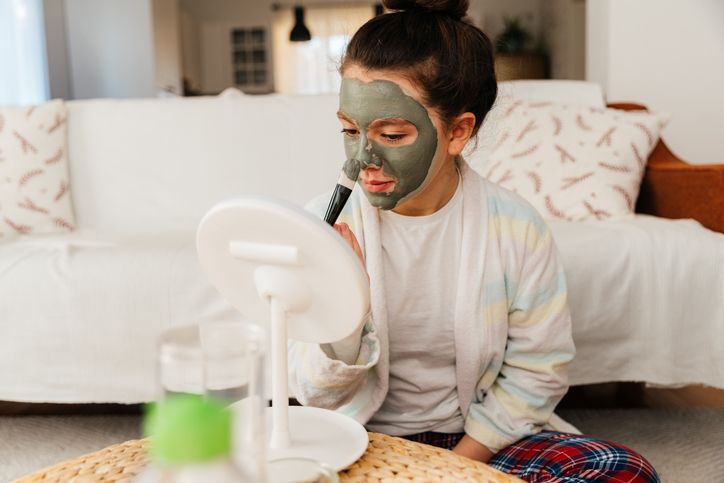
Why clay masks help manage oily skin
Clay masks are effective for reducing excess sebum and keeping oily skin under control. They work by drawing out buildup from inside the pores, helping to remove excess oil and dead skin cells. This helps prevent clogged pores and lowers the risk of acne breakouts. Clay also helps calm the skin’s surface and supports a more balanced appearance.
Sebaceous glands often produce too much sebum in response to heat, stress, or blocked follicles. Clay masks help by absorbing that excess without drying out the skin, especially when used in moderation.
Best types of clay for sebum control
• Kaolin clay – gentle and suitable for sensitive skin
• Bentonite clay – strong oil-absorbing properties, good for very oily skin
• French green clay – rich in minerals and ideal for unclogging pores
Each type helps reduce excess oil production and improve the texture of acne prone skin.
How to apply clay masks correctly
• Use clay masks one to two times a week on clean, damp skin
• Apply a thin, even layer across areas with visible oil buildup
• Leave on for 10 to 15 minutes—until dry to the touch but not tight
• Rinse off with lukewarm water
• Pat dry and apply a lightweight, oil free moisturizer
Avoid letting the mask dry completely, as this can irritate the skin and cause oil glands to produce more sebum. Proper timing ensures the mask absorbs excess oil without disturbing the skin barrier or causing flaky skin.

Use Niacinamide to Balance Oily Skin
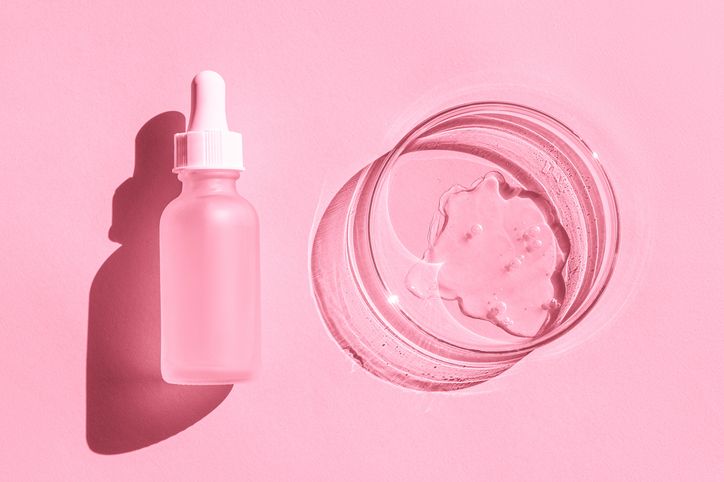
Importance of niacinamide in oil control
Niacinamide, a form of vitamin B3, is effective for oily skin and acne prone skin. It helps regulate sebum production while supporting the skin barrier. This makes it useful for those dealing with excess oil, enlarged pores, and frequent acne breakouts. Niacinamide is well-tolerated, even by sensitive skin, and helps improve skin texture over time without causing irritation.
Skin benefits of niacinamide
• Reduces sebum secretion and helps prevent excess oil buildup
• Minimizes the appearance of enlarged pores
• Strengthens the skin barrier to prevent water loss
• Helps even skin tone and reduces surface redness
• Supports overall skin health without clogging pores
Regular use helps control oily skin while keeping the skin hydrated and less reactive. It also helps lower the chance of skin irritation from other treatments, especially when combined with exfoliating products.
How to apply niacinamide effectively
• Choose a product with 5% niacinamide concentration
• Apply twice daily after cleansing, once in the morning and once at night
• Use fingertips to pat it into the skin until fully absorbed
• Follow with a lightweight moisturizer
Avoid layering niacinamide immediately after strong acids or retinoids. Give each product time to absorb before moving to the next step. With consistent use, the skin often shows reduced oil production and fewer breakouts within a few weeks.
Book Now to Experience
Acne Treatment
1 Minute Self-Registration
Date should not be before minimal date

Exfoliate With Salicylic Acid to Unclog Pores
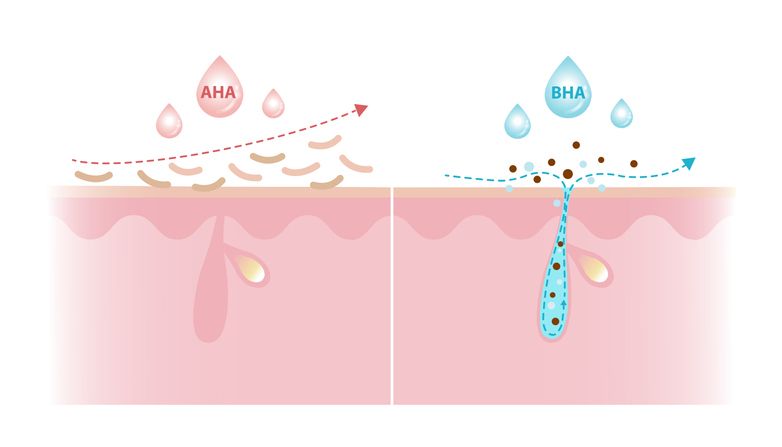
Why BHA works for oily and blemish prone skin
Salicylic acid, a type of beta hydroxy acid (BHA), is oil-soluble. This allows it to go deeper into the pores compared to other exfoliants. It dissolves the buildup of excess sebum and dead skin cells that often lead to clogged pores and acne breakouts. Regular exfoliation with BHA helps clear blockages, reduces surface oil, and improves overall skin texture.
Unlike scrubs, salicylic acid exfoliates without friction. This lowers the chance of skin irritation, making it a good option for acne prone skin and sensitive skin.
Benefits of salicylic acid for oily skin
• Penetrates oil to clean deep inside the pores
• Reduces excess oil production without stripping the skin
• Helps treat blackheads, whiteheads, and acne vulgaris
• Removes dead skin cells to improve skin clarity
• Supports better absorption of other skin care products
This helps keep the skin’s surface clean and free of buildup that triggers breakouts and inflammation.
How to use BHA safely and effectively
• Start with a 2% concentration, suitable for most skin types
• Apply after cleansing and before moisturizing
• Use two to three times per week depending on your skin’s response
• Wait 20 to 30 minutes after application before layering other products
• Start with once-weekly use if you have sensitive or dry skin
Avoid combining BHA with other strong exfoliants on the same day. If used correctly, salicylic acid can help reduce excess sebum and clear out hair follicles, leading to smoother, more balanced skin over time.

Keep Skin Hydrated to Prevent Increased Oil Production
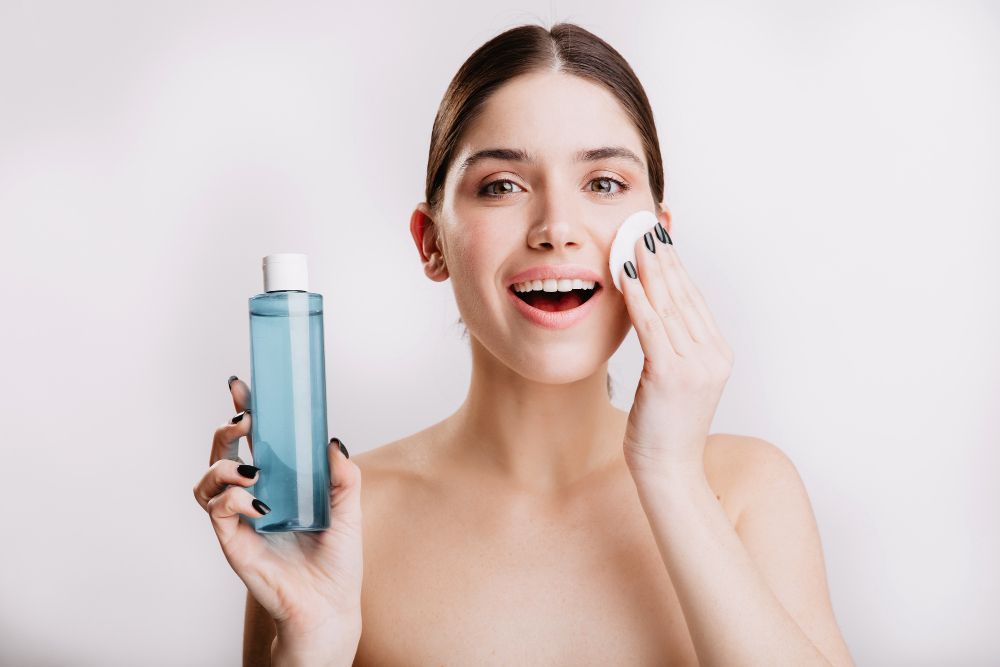
Why hydration affects sebum levels
When the skin lacks moisture, sebaceous glands often respond by producing more sebum. This increase in oil production is the skin’s attempt to protect itself, but it can lead to excess oil, clogged pores, and acne breakouts. Keeping the skin properly hydrated helps avoid this reaction and supports a stable oil-water balance.
This is especially important for oily skin types, where dehydration can exist beneath the surface. Supporting the skin’s protective barrier reduces the chance of irritation and helps lower sebum excretion rates over time.
Practices that support proper hydration
• Apply hydrating products to slightly damp skin to boost absorption
• Use serums with ingredients like hyaluronic acid to draw in water
• Choose non-comedogenic moisturizers that won’t clog pores
• Drink at least eight glasses of water daily to hydrate the skin from within
• Use a humidifier at night to maintain skin moisture in dry environments
Products should be lightweight and oil free to avoid buildup. If the skin is well-hydrated, it becomes less likely to produce excess sebum in response to dryness or barrier damage.
Book Now to Experience
Acne Treatment
1 Minute Self-Registration
Date should not be before minimal date

Repair and Protect the Skin Barrier to Reduce Excess Oil

Signs of a weakened skin barrier
A damaged skin barrier can lead to increased oil production, irritation, and acne breakouts. You might notice signs like tightness, redness, flaky skin, or sensitivity to products. When the barrier is compromised, sebaceous glands may produce more sebum to defend the skin. This can worsen oily skin and contribute to clogged pores and inflammation.
Barrier damage often results from over-cleansing, skipping moisturizer, using harsh exfoliants, or exposure to environmental stressors like heat and pollution.
How barrier repair helps control oily skin
Supporting the skin barrier improves hydration and reduces the skin’s need to produce more sebum. This helps balance oil levels and calms reactive areas. For acne prone skin, maintaining a strong barrier also reduces breakouts triggered by irritation and excess oil buildup.
Steps to restore and protect the barrier
• Use moisturizers that contain ceramides, niacinamide, or hyaluronic acid to repair and hydrate
• Avoid over-washing and harsh scrubs that weaken the barrier
• Apply moisturizer to damp skin to lock in water
• Use gentle cleansers and avoid products with high alcohol content
• Reapply moisturizer if the skin feels tight or dry throughout the day
Focus on restoring comfort and balance, rather than stripping the skin of oil. A strong barrier prevents sebum overproduction, supports skin recovery, and improves long-term skin health.

Common Mistakes That Can Worsen Oily Skin

Over-cleansing or using harsh products
Washing the face too often or using cleansers that strip the skin can weaken the protective barrier. This often triggers oil glands to produce more sebum to replace lost moisture. As a result, the skin becomes even oilier throughout the day. Instead, cleanse twice daily using gentle, water-based products that support the skin’s surface.
Skipping moisturizer due to oily texture
Many people with oily skin avoid moisturizers out of concern that they will clog pores or add more oil. In reality, skipping hydration can cause the skin to dry out, leading to increased sebum production. Lightweight, non-comedogenic moisturizers help keep the skin hydrated and prevent overactive oil glands.
Using too many active ingredients at once
Mixing exfoliants, retinoids, and strong acne treatments without guidance can irritate sensitive skin. This may lead to skin redness, breakouts, and more visible oiliness. It also disrupts the skin’s barrier, which plays a key role in regulating sebum production. Apply actives gradually and follow with a calming moisturizer to maintain balance.
Applying thick, occlusive makeup
Heavy makeup formulas may block hair follicles and trap sebum on the skin’s surface. This often leads to clogged pores, increased risk of acne breakouts, and more visible shine. Choose breathable, oil free cosmetics that allow the skin to function normally without buildup.
This section helps educate readers on what to avoid while reinforcing the importance of proper product use and barrier care—without overlapping earlier sections.
Book Now to Experience
Acne Treatment
1 Minute Self-Registration
Date should not be before minimal date

Impact of Seasonal Changes on Sebum Production

Shifts in weather and their effect on oil levels
Sebaceous glands respond to changes in temperature and humidity. During warmer months, increased heat and sweat can mix with sebum on the skin’s surface. This often leads to more clogged pores, shiny skin, and a higher chance of acne breakouts. On the other hand, cold weather and indoor heating can dry out the skin. In response, the oil glands may increase sebum production to compensate for moisture loss.
These fluctuations make it more difficult to control oily skin without adjusting your routine. Skin concerns like irritation, flaky skin, or uneven texture may appear more frequently during seasonal transitions.
Adapting skincare to stay balanced
• In summer, use lighter, water-based products and apply blotting papers to remove excess oil during the day
• Switch to gel moisturizers that feel weightless but still support hydration
• Cleanse gently to remove sweat, dirt, and buildup from sunscreen
• In winter, continue using non-comedogenic moisturizers, but choose slightly richer textures if the skin feels tight
• Add ingredients like ceramides and hyaluronic acid to help maintain the skin’s protective barrier

Professional Acne Treatment That Helps Reduce Sebum and Prevent Breakouts
How targeted treatments improve skin balance
For those struggling with persistent oily skin and excess sebum production, New Beauty’s acne treatment can support and enhance the effects of your daily routine. When oil glands are overactive, home care may not be enough to fully control oily skin or reduce clogged pores. In these cases, non-invasive clinical treatments can calm sebum secretion, help manage acne breakouts, and improve overall skin texture.
New Beauty’s Acne Treatment is designed for acne prone skin, especially for those with visible blemishes, enlarged pores, and recurring breakouts caused by excess oil production.
How the treatment works
The procedure begins with a dual spiral suction and drainage probe. This step performs vacuum microdermabrasion to exfoliate dead skin cells and remove dirt and hardened sebum from clogged pores. It gently clears buildup from the skin’s surface and helps calm acne inflammation.
Once the skin is cleared, a medical-grade hydrating serum is infused into the deeper layers of the skin. This step restores hydration, supports the protective barrier, and helps balance the water-to-oil ratio. It also soothes overactive sebaceous glands to reduce sebum secretion and prepare the skin to resist future breakouts.
Advantages of the treatment
• Helps remove impurities from clogged pores
• Reduces excess sebum on the skin’s surface
• Soothes irritated or inflamed acne-prone areas
• Improves hydration without triggering more oil production
• No needles, no downtime, and suitable for sensitive skin types
By reducing oil buildup and calming the sebaceous glands, this treatment supports longer-lasting control of oily skin. It also improves the appearance of acne scars, blackheads, and dull skin tone—making it a strong option for those managing moderate to severe acne vulgaris.
This approach is especially useful when excess oil production is resistant to changes in routine, or when genetic factors, hormonal shifts, or skin irritation increase the skin’s oil output.
Book the acne treatment today to experience how this treatment can support clearer, healthier skin with less oil and fewer breakouts.
New Beauty's Acne TreatmentBook Now to Experience
Acne Treatment
1 Minute Self-Registration
Date should not be before minimal date
FAQ
What ingredients should I avoid if I have oily skin?
If you have oily skin or experience frequent acne breakouts, avoid products with ingredients like mineral oil, lanolin, and alcohol-based formulations. These can either clog pores or strip the skin, causing sebaceous glands to increase sebum production in response. Also avoid heavy fragrances and comedogenic oils such as coconut oil, which can worsen clogged pores. Always check for labels that say non-comedogenic or oil free to help control oily skin and reduce the risk of breakouts.
Can stress increase sebum production?
Yes. When you're under stress, the adrenal glands produce more cortisol, which can indirectly stimulate sebaceous glands to produce more sebum. This often leads to increased oil on the skin’s surface and a higher risk of clogged pores and acne vulgaris. Managing daily stress and supporting the skin with a balanced skincare routine can help reduce the impact of internal stress on skin health.
Is oily skin more prone to aging or wrinkles?
Oily skin generally shows signs of aging more slowly than dry skin, mainly because the natural oils help maintain skin elasticity and hydration. However, oily skin is more prone to enlarged pores, uneven texture, and acne scarring. While sebum provides some natural protection, it's still important to protect oily skin from UV damage, pollution, and dehydration to maintain long-term skin health.
How can I reduce shine throughout the day without over-cleansing?
To reduce shine without causing irritation or triggering more oil, use blotting papers during the day to absorb excess oil without disrupting the skin barrier. You can also use lightweight mattifying primers or setting powders designed for oily skin. Avoid over-cleansing, as this can strip the skin and lead to increased sebum production. Focus on gentle cleansing and keeping the skin hydrated to maintain oil control across the skin’s surface.
Do oral contraceptives help with oily skin?
In some cases, oral contraceptives are prescribed to help regulate hormones that affect sebum production. By adjusting hormone levels, they can reduce the activity of sebaceous glands and help treat oily skin and acne vulgaris. These medications may not be suitable for everyone and should only be used under medical supervision. If hormonal imbalance is suspected to contribute to increased oil production, this can be a treatment option discussed with a healthcare provider.
Recommended Articles
COPYRIGHT© NEW BEAUTY MANAGEMENT LIMITED 2025. ALL RIGHT RESERVED.

